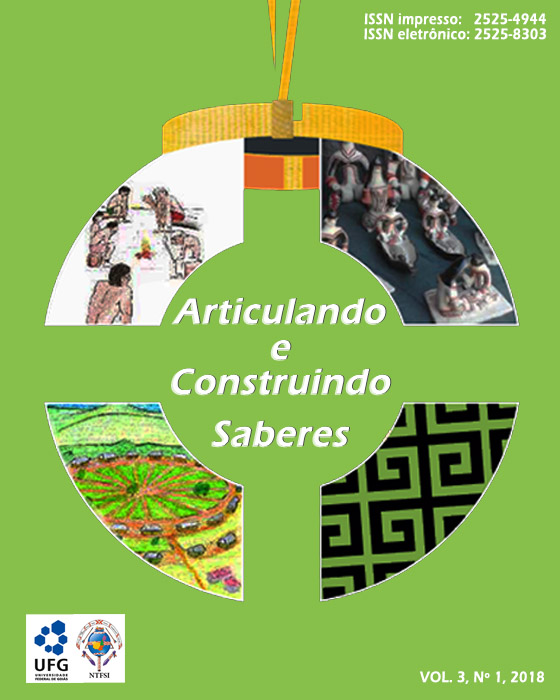Experiencias académicas y buenas prácticas educativas en la enseñanza de lenguas indígenas, en una universidad de Brasil
DOI:
https://doi.org/10.5216/racs.v3i1.55393Keywords:
línguas nativas, Núcleo Takinahaky de Ensino Superior IndígenaAbstract
This work was written as a symbol of struggle and conquest of what can be good practices of teaching the native languages of Brazil and Portuguese. The illusion is that other institutions dedicated to teacher training implement academic processes similar to those that have been put into practice. This course is called: Complementary Study “Indigenous Languages I, a member of the Baccalaureate in Intercultural Education Takinahaky Nucleus of Indigenous Higher Education, Federal University of Goiás (UFG), Brazil, where the processes of social construction of the original languages and the (Foucault, 1976), one of the most relevant and complex stages of their education is to decide in the initial stage of his degree. This academic space stands out for showing the importance of redemocratization, of teaching Portuguese as a morphological structure and openness to the documentation of indigenous languages as a written and necessary practice for these peoples. It is considered to start in this way, because Portuguese is the language that serves as communication between university teachers and indigenous peoplesDownloads
Download data is not yet available.
Downloads
Published
2018-10-11
How to Cite
AVELAR, Antonio Carrillo. Experiencias académicas y buenas prácticas educativas en la enseñanza de lenguas indígenas, en una universidad de Brasil. Articulando e Construindo Saberes, Goiânia, v. 3, n. 1, 2018. DOI: 10.5216/racs.v3i1.55393. Disponível em: https://revistas.ufg.br/racs/article/view/55393. Acesso em: 5 dec. 2025.
Issue
Section
Artigos
License
Authors authorize Articulando e Construindo Saberes to publish an article, if accepted, signing their contribution as original and not submitted to another publisher for publication. If accepted and published, Articulando e Construindo Saberes articles have a Creative Comons CC-BY license.




